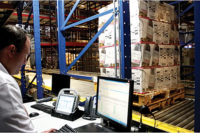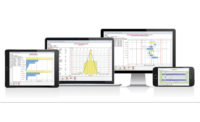Bakers and snack manufacturers know that offering retailers great products it is not enough today. How they deliver their products to customers is equally important. Send a retailer the wrong item or the wrong quantity, or miss a contracted delivery time, and manufacturers might lose that business.
Bakers and snack producers face other challenges, as well. Their products often have a limited shelf life and must travel quickly from their processing facilities to customers’ stores. The faster they can move products from point A to point B, the better.
Bakers and snack manufacturers also serve a diverse clientele, ranging from grocery stores to local coffee shops, convenience stores to chain restaurants. Small businesses often order smaller product quantities, but place orders more frequently, increasing the number of deliveries required.
Fortunately, logistics software tools are now available to help bakers and snack producers address these varied challenges.
Customization and flexibility
“There is so much complexity in bakery and snacks due to the wide variety of products, as well as food-safety regulations, that finding logistics software to cover every situation is simply not possible,” says Melissa Duke, project manager, Tompkins International, Raleigh, NC. Therefore, customization is often required to yield fully integrated logistics software. “Developers need to include as much functionality as they can for a reasonable price and then tailor the final solution to their customers’ specific requirements.”
Many manufacturers seek logistics software to manage inventory and dispatch orders against that inventory. However, with perishable products, keeping an abundance of inventory on hand is not desirable. Most manufacturers produce inventory against real or predicted order volumes, with orders shipped out as soon as possible due to maximize short product shelf life, says Marc Braun, president, pcdata USA, East Granby, CT.
“Any good logistics solution also must support the ability to make sound business decisions on product shortages and overages, which are daily occurrences,” says Braun. “Bakeries are very service-oriented and allow for late order submittal. Production is made in batches and seldom will the total made match the demand.”
Cloud-based solutions
Current logistics software trends are favorable for bakers and snack manufacturers in that more system installations are cloud-based (provided through the Internet) with data input trending more from wireless devices throughout the supply chain, according to Duke. These solutions are faster to implement and can result in real-time data analysis, something manufacturers of short-shelf-life products need.
“Because shelf life is always an issue, bakers and snack producers can utilize the cloud-based data of fast- and slow-selling items to help them plan appropriate-sized production batches,” says Duke. “This data can come from delivery drivers who may be stocking shelves and entering in product inventory counts using personal tracking devices, such as cell phones.”
For some time, logistics software has provided increased levels of visibility and traceability with respect to food production and distribution, according to Bruce Stubbs, director of industry marketing, Honeywell Sensing and Productivity Solutions, Minneapolis. Visibility of incoming raw materials helps food processors better plan production. Being able to provide tracking and traceability of both raw materials and finished goods provides brand protection in the event of a recall.
“Downstream, at the store delivery level, the trend is toward providing a total solution—hardware and software that enables company personnel to more effectively merchandise, order and fulfill,” says Stubbs. “Functionality, such as mobile point of sale, mobile document imaging and secure signature capture, is critical to ensuring that the right product in the right quantity is presented in the right shelf locations in damage-free condition.”
In addition, food safety regulations are driving food processors to implement systems and processes that allow them to track and trace production to final delivery in case of recalls. Logistics software enables manufacturers to quickly identify where production of a certain date range or batch range is in the supply chain, limiting the cost of potential recalls.
Ralf Ulmer, CEO, toolbox Software North Americas Inc., Scottsdale, AZ, says lead times between order cutoff, warehouse picking and shipping are getting shorter due to market demand. While it was possible in the past to have order cutoff times of 24 hours, or even 48 hours, customers today want to keep lead time to a minimum.
To meet this need, the company offers dispotool flexible picking solutions for bakeries snack operations. Dispotool is comprised of a central software solution, capable of operating all picking processes, which is complemented by displays or handhelds. The display shows what product is to be distributed by using a color code and digits. The technology, known as “pick-by-light,” ensures language-independent comprehension and simple operation.
Mobility solutions
Cloud-based computing technology and related mobility solutions are core trends in logistics software. “They have become key enablers of data gathering and analysis across a company’s supply chain,” says Dave Williams, director of software and solution delivery, Westfalia Technologies Inc., York, PA. “The ability to monitor production and inventory levels across the network, in real time, allows the plant to quickly identify trends and monitor increases and decreases in order levels.”
Consumer-grade mobile devices, along with cloud-based deployment, have opened up a new level of system sophistication to customers that previously could not afford that level of investment, according to Derek Curtis, vice president, DSD & Mobile Logistics Group, HighJump, Minneapolis. In addition to budgetary improvements, advances in mobile connectivity let software suppliers provide information beyond real-time transactional information, expanding into access to sales-enhancing information such as product images, graphical reporting and GPS location-based triggers.
Logistics software is also becoming more flexible and customizable. “This trend has been in place for some time,” Curtis says. “Solutions are going beyond flag/switch configuration to address functionality requirements, and moving to flexible screen design where end users can select which content to include on screens to customize their needs.”
Predictive analysis is another trend. For example, pcdata USA, East Granby, CT, offers predictive analysis capability through its Performance Manager. Customers can run simulations of projected orders to determine resource requirements and shipment completion times. Using set operational standards for walking and putting product away, the Performance Manager allows users to see how many man-hours are needed to complete a set of orders—projected or real. Users can enter labor schedules to determine how many operators will be needed to complete a projected set of orders within a certain time limit.
Looking ahead, Williams says he sees growing demand for software solutions that control the entire warehouse process, thus reducing the complexity of using several function-specific applications. “New warehouse execution systems (WES) combine a warehouse control system (WCS) with a warehouse management system (WMS) to help direct, control and optimize internal material flow and order picking,” he explains. “This enables food processors to increase inventory accuracy.”
Route optimization
Route optimization is another key factor in delivering products on schedule. It’s a complex process with many variables that need to be taken into consideration. An automated routing optimization solution can help users streamline their planning process, produce realistic plans and make sure that costly transportation resources are used efficiently, according to William Salter, CEO and president, Paragon Software Systems, Dallas.
To that end, the company has developed the Paragon Route Control, which allows users to specify alternate routes between two locations by vehicle type and identify when the alternate routes should be used. Paragon then applies these rules at the relevant time of day, week or month, depending on vehicle type. Details of detours are created using a calendar, which can be stored and reused; algorithms within the software then calculate the best driver schedules.
“Our customers can create rules that automatically apply legitimate route deviations at specific times of the day, week or month to their transportation plans, reducing the level of manual intervention required by the planner,” Salter says.
When the right suite of software solutions designed to streamline operations, snack food producers and bakers will save money, strengthen relationships with customers and have more time to focus on what they do best—creating products that consumers crave.














